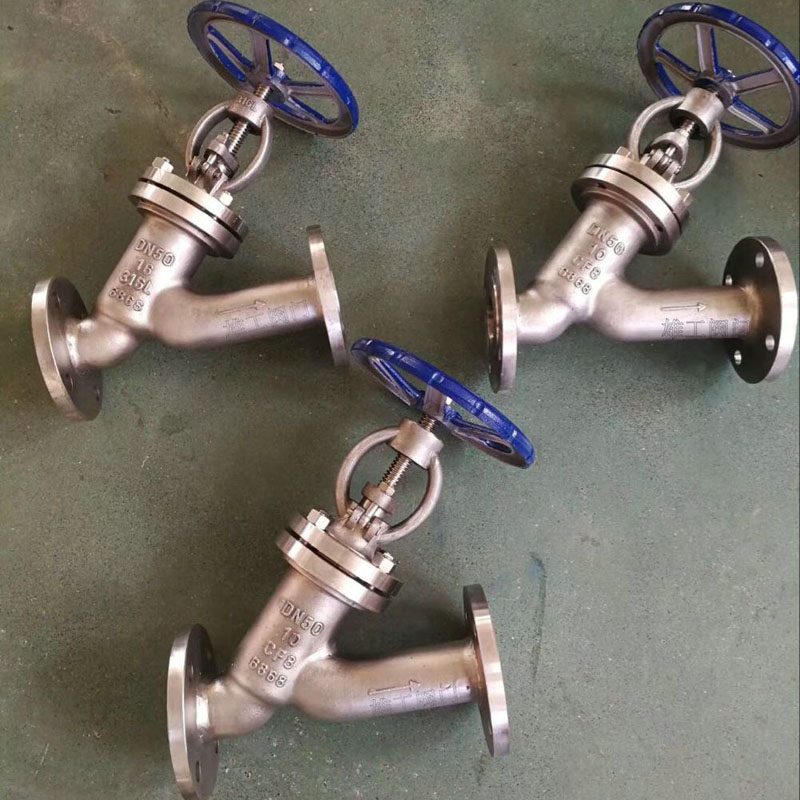Features of Gate Valve
2023-06-13
Gate valves are a type of linear motion valve commonly used to control the flow of liquids or gases. They have several distinct features that set them apart from other types of valves. Here are the key features of gate valves:
 Gate: Gate valves derive their name from the gate-like disc or wedge that moves perpendicular to the flow direction to control the flow. The gate is usually a flat or parallel-sided disc that can completely block or allow full passage of the fluid when positioned accordingly.
Gate: Gate valves derive their name from the gate-like disc or wedge that moves perpendicular to the flow direction to control the flow. The gate is usually a flat or parallel-sided disc that can completely block or allow full passage of the fluid when positioned accordingly.
On/Off Function: Gate valves are primarily designed for either fully open or fully closed positions. They provide a tight seal when closed, effectively stopping the flow of fluid, and offer minimal resistance to flow when fully open.
Unobstructed Flow: When the gate of the valve is fully retracted, gate valves provide an unobstructed flow path, allowing for minimal pressure drop and smooth flow. This feature makes them suitable for applications where a straight-through flow path is required.
Bi-Directional Flow: Gate valves are typically designed to allow bidirectional flow. The gate can be operated in either direction, allowing the fluid to flow from either end of the valve.
Low Pressure Drop: Gate valves offer minimal resistance to fluid flow when fully open, resulting in low pressure drop across the valve. This characteristic is advantageous in applications where maintaining high flow rates is important.
Tight Seal: Gate valves provide a tight seal when fully closed, minimizing or preventing leakage. The gate is pressed against the seat to create a seal, often aided by a sealant or packing material.
Manual or Actuated Operation: Gate valves can be operated manually using a handwheel or lever. Additionally, they can be equipped with actuators such as electric, pneumatic, or hydraulic actuators for automated control, allowing remote operation and integration with control systems.
Various Materials and Sizes: Gate valves are available in a wide range of materials such as brass, cast iron, stainless steel, or exotic alloys, allowing their use in different applications and for handling various fluids. They come in different sizes to accommodate different flow rates and pipe diameters.
Simple Construction and Maintenance: Gate valves have a relatively simple design with fewer internal parts, making them easy to maintain and repair. This simplicity also contributes to their durability and reliability.
Slower Operation: Gate valves are known for their slower operation compared to some other types of valves. The gate needs to be fully opened or closed, which may require more time compared to valves with a quarter-turn or globe design.
It's important to note that gate valves may not be suitable for applications where throttling or controlling the flow rate is essential since they are primarily designed for on/off operations. Additionally, some gate valves may be prone to potential issues like seat leakage or trapped debris, depending on their design and maintenance practices.

On/Off Function: Gate valves are primarily designed for either fully open or fully closed positions. They provide a tight seal when closed, effectively stopping the flow of fluid, and offer minimal resistance to flow when fully open.
Unobstructed Flow: When the gate of the valve is fully retracted, gate valves provide an unobstructed flow path, allowing for minimal pressure drop and smooth flow. This feature makes them suitable for applications where a straight-through flow path is required.
Bi-Directional Flow: Gate valves are typically designed to allow bidirectional flow. The gate can be operated in either direction, allowing the fluid to flow from either end of the valve.
Low Pressure Drop: Gate valves offer minimal resistance to fluid flow when fully open, resulting in low pressure drop across the valve. This characteristic is advantageous in applications where maintaining high flow rates is important.
Tight Seal: Gate valves provide a tight seal when fully closed, minimizing or preventing leakage. The gate is pressed against the seat to create a seal, often aided by a sealant or packing material.
Manual or Actuated Operation: Gate valves can be operated manually using a handwheel or lever. Additionally, they can be equipped with actuators such as electric, pneumatic, or hydraulic actuators for automated control, allowing remote operation and integration with control systems.
Various Materials and Sizes: Gate valves are available in a wide range of materials such as brass, cast iron, stainless steel, or exotic alloys, allowing their use in different applications and for handling various fluids. They come in different sizes to accommodate different flow rates and pipe diameters.
Simple Construction and Maintenance: Gate valves have a relatively simple design with fewer internal parts, making them easy to maintain and repair. This simplicity also contributes to their durability and reliability.
Slower Operation: Gate valves are known for their slower operation compared to some other types of valves. The gate needs to be fully opened or closed, which may require more time compared to valves with a quarter-turn or globe design.
It's important to note that gate valves may not be suitable for applications where throttling or controlling the flow rate is essential since they are primarily designed for on/off operations. Additionally, some gate valves may be prone to potential issues like seat leakage or trapped debris, depending on their design and maintenance practices.
X
We use cookies to offer you a better browsing experience, analyze site traffic and personalize content. By using this site, you agree to our use of cookies.
Privacy Policy



